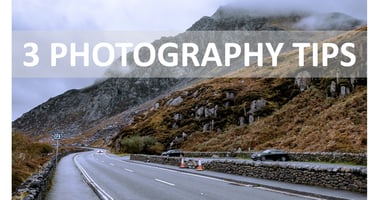Have you ever found yourself caught in an endless cycle of planning your next photography...
Mastering Focus: Elevate Your Landscape Photography Game
Focus is the unsung hero of stunning landscape photography. Nail it, and your images radiate clarity and depth. Miss it, and even the most scenic vistas can fall flat. In this guide, we’ll demystify the art of focus and sharpness, exploring techniques to help you consistently capture breathtaking landscapes.
The Basics: Where to Place Your Focus Point
A common question among photographers is: Where should I focus in a scene? While it may spark debates, there’s a practical rule of thumb that works in most scenarios.
For maximum depth of field—sharpness from foreground to background—try focusing about a third of the way into your scene. This technique ensures balanced sharpness across your composition. However, the magic truly happens when you pair this with an appropriate aperture and, if needed, a hyperfocal distance calculator.
Here’s an important distinction: when focusing a third of the way in, this refers to the image as displayed on your camera’s LCD screen—not necessarily what you perceive with the naked eye. It’s a subtle yet impactful difference that can significantly influence your results.
Understanding Focus Modes: Which One is Right for You?
Focus modes are the foundation of sharp, well-composed images. Here’s a breakdown of the three main focus modes and their ideal uses:
-
Single Autofocus (AF-S or One-Shot AF)
- Best for static subjects, such as tranquil landscapes or architectural shots.
- Locks focus on your chosen point with precision.
-
Continuous Autofocus (AF-C or AI Servo AF)
- Designed for dynamic scenes where subjects are moving, like wildlife or sports.
- Continuously tracks and adjusts focus as your subject shifts.
-
Manual Focus (MF)
- Offers ultimate control, allowing you to fine-tune focus to your exact liking.
- Perfect for experienced photographers or when autofocus struggles (e.g., in low light or with complex textures).
Experimenting with these modes will help you find the perfect match for different situations, ensuring your focus works with your creative vision rather than against it.
Choosing the Right Focus Point Size & Type
Selecting the ideal focus point configuration can make a world of difference. Here are some common options and their applications:
-
Single Point Autofocus
Offers pinpoint accuracy, enabling you to focus on a specific area of the frame. This is often the go-to choice for landscape photographers aiming to highlight intricate details. -
Zone Autofocus
Provides a broader focus area, making it excellent for subjects that may shift unpredictably within a specific region of your frame. While less precise than single-point autofocus, it excels in scenarios demanding flexibility. -
Eye Autofocus
Primarily a portrait photographer’s tool, eye autofocus locks onto a subject’s eyes with precision. While its use in landscape photography is limited, it can come in handy for unique compositions featuring prominent focal points, such as statues or wildlife. -
Wide Tracking Autofocus
Designed for capturing fast-paced action, this mode covers a broad area to track subjects in motion. While not as precise as single-point focus, it’s invaluable for high-energy scenarios where adaptability is key.
Unlocking the True Power of Focus
Mastering focus is more than a technical skill—it’s a creative journey. By experimenting with various focus modes, points, and techniques, you can craft images that resonate with your artistic vision.
For static scenes, the precision of single-point autofocus might be your best ally. For unpredictable environments, zone autofocus could be the solution. The key is to adapt to the demands of each scene while refining your personal style.
Final Thoughts
Focus is not just a technical detail; it’s an essential storytelling tool in photography. By understanding the nuances of focus placement, modes, and configurations, you can elevate your landscape shots from good to extraordinary. So grab your camera, head out, and let your newfound focus skills bring your creative visions to life.
By refining your approach to focus, you’ll uncover a new level of clarity and depth in your work—one frame at a time.



